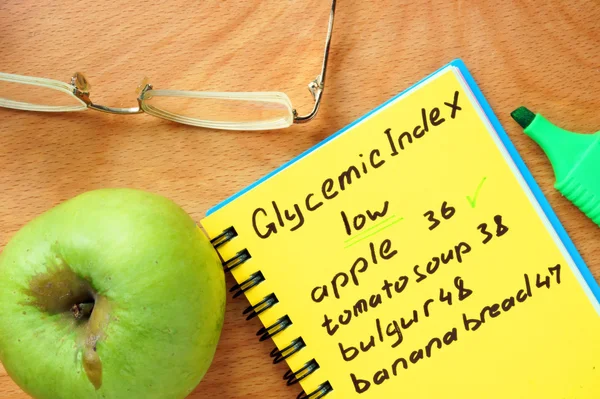What Is a Low-Glycemic Diet?
A low-glycemic diet is an eating plan that focuses on choosing foods that have a minimal impact on your blood sugar levels. It’s based on the glycemic index (GI), which ranks carbohydrates on a scale of 0 to 100 based on how quickly they raise your blood sugar.
Here’s a breakdown of the glycemic index:
- Low GI (55 or less): These foods cause a slow and steady rise in blood sugar. Examples include non-starchy vegetables, beans, and some fruits like apples and berries.
- Medium GI (56 to 69): These foods cause a moderate rise in blood sugar. Examples include whole grains like brown rice and quinoa, and some fruits like bananas and pineapples.
- High GI (70 or above): These foods cause a rapid rise in blood sugar. Examples include white bread, white rice, potatoes, and sugary drinks.
What To Eat On a Low-Glycemic Diet:
- Focus on non-starchy vegetables: These are low in calories and carbs and have a minimal impact on blood sugar.
- Choose whole grains over refined grains: Whole grains are higher in fiber and nutrients than refined grains and have a lower GI.
- Include lean protein sources: Protein helps slow down the digestion of carbohydrates and can help you feel full.
- Eat healthy fats: Healthy fats, such as those found in avocados, nuts, and seeds, can help stabilize blood sugar levels.
- Limit sugary drinks and processed foods: These foods are high in sugar and refined carbohydrates and can cause spikes in blood sugar.
Here are some additional tips for following a low-glycemic diet:
- Read food labels: Pay attention to the carbohydrate content and the glycemic index of the foods you choose.
- Plan your meals and snacks: This will help you make sure you have healthy options available when you’re hungry.
- Don’t be afraid to experiment: There are many delicious and nutritious low-glycemic recipes available online and in cookbooks.
Remember, a low-glycemic diet is not a one-size-fits-all approach. It’s important to talk to your doctor or a registered dietitian to create a plan that is right for you.
What to Avoid:
- Sugary drinks: Limit soda, juice, sports drinks, and other sugary beverages. Opt for water, unsweetened tea, or black coffee instead.
- Processed foods: Avoid processed meats, frozen dinners, instant noodles, and snacks high in sodium, unhealthy fats, and added sugars.
- Unhealthy fats: Limit saturated and trans fats found in fried foods, fatty meats, and processed foods.
- Refined grains: Choose whole grains over refined grains like white bread, pasta, and rice.
- Excessive alcohol: Limit alcohol consumption to moderate amounts.
Remember:
- Moderation is key. You can still enjoy occasional treats, but don’t make them a regular part of your diet.
- Focus on overall dietary patterns. Don’t get hung up on individual foods. Aim for a variety of nutrient-rich choices most of the time.
- Make changes gradually. Don’t try to overhaul your diet overnight. Start with small changes and build on them over time.
- Listen to your body. Eat when you’re hungry and stop when you’re full.
By following these tips, you can make healthy choices that will help you feel your best and improve your overall health.
Read Also | 25 Life-Changing Mediterranean Diet Recipes for Healthy Eating
Note: This article is written based on scientific evidence found by the 247newsaroundtheworld.com team. Sources are duly referenced with keywords hyperlinked to source websites and are clickable for reference.



